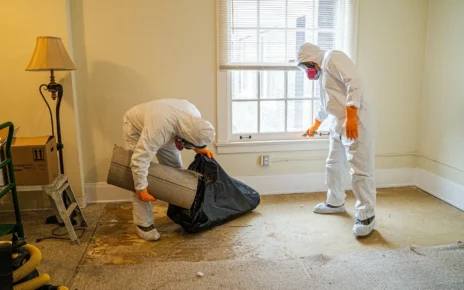Embarking on the journey of a do-it-yourself domain can sometimes be quite overwhelming, especially if it is your first time. Matters tend to become worse when dealing with electricity because a simple mistake could prove disastrous. A colossal 60% of all residential fires are attributed to electrical defects, according to the U.S. Fire Administration. These are often identified by electrical defect notices. As a novice DIYer father figure, this must sound alarming, which is why this blog post seeks to help you identify, prevent, and fix electrical anomalies in your home to ensure safety for your family.
Electrical Wiring and Circuit Overloads
You might have noticed that sometimes when you switch on an appliance, the circuit breaker trips. What is happening here is that you are experiencing an electrical overload. Is it dangerous? Yes, it certainly is. Overloaded circuits can cause fires if they are not promptly addressed. Being able to understand how much your domestic circuits can handle and managing power demands accordingly can save your household from potential disasters.
Outlets Emitting Smoke or Sparking
Whenever your outlets emit smoke or spark out, take this as a clear sign that something is wrong with your electrical system. Sparks or smoke from outlets indicate severe defects that need urgent attention to prevent further damage or even fire outbreaks.
Frequent Blow Fuses
Fuses blowing too often could be an indication of circuit overloading or even short-circuiting. If your fuse keeps blowing up every time you replace it, you could be dealing with a serious defect that needs immediate assistance.
Shocks from Electrical Devices and Equipment
If you experience slight shocks from appliances or devices in your house upon touching them, then this means there might be a short in your circuitry. This situation is not only dangerous but could potentially lead to serious injuries.
Insulation Breakdown
With time, the insulating material around your wires could wear off resulting in direct exposure of bare wire. This situation is hazardous because it can lead to shock accidents, power surges, and even sparks that may result in a fire.
Clicking or Buzzing Noises from Outlet
When you hear unusual clicking or buzzing noises from your outlets or switches, this might indicate wiring problems or faulty appliances. Whenever you hear such sounds, it is advisable to have an electrical expert check your wiring system right away.
Flickering Lights
Flickering lights do not always mean a paranormal activity. Sometimes, it entails a loose electrical connection. Always ensure that your bulbs are screwed properly and if the problem persists, get an electrical check-up as soon as possible.
Corrosion and Rust
Rust on your electrical panels or corrosion on wiring can negatively impact the flow of electricity and pose potential hazards. Ensuring regular checks and cleaning dusty spots can help prevent short-circuiting or other wiring issues.
Frequent Power Surges
Frequent power surges may cause significant damage to your appliances over time. They are typically caused by power line malfunctions, lightning strikes or faulty appliances.
Burn Marks Near Outlets
Seeing burn marks near outlets can be quite alarming. They strongly signify overheating and potentially a fire risk situation. Always make sure the concerned outlet is disconnected from power before taking any measure.
Aged Electrical Infrastructure
An outdated electrical system might not handle today’s high energy demand. If your home’s wiring is old, consider an upgrade to a more modern system that is designed to safely cater to higher load requirements.
Lack of Ground Fault Circuit Interrupters (GFCIs)
GFCIs are essential as they help prevent electrocution. They trip the electrical circuit whenever they detect an imbalance, thus preventing potential electrical shocks. If your home lacks these, consider installing them especially in high-moisture areas like bathrooms and kitchens.
Mismatched Wires and Terminals
If you notice that the wire sizes do not match with their terminal sizes, this might indicate an improvisation attempt on your system. This is a major issue as it may lead to loose connections and even overheating in severe cases.
Unprotected Electrical Outlets
Uncovered outlets can pose a major risk in homes with young children who might inadvertently put objects inside. Therefore, always ensure the outlets are securely covered.
Understanding Electrical Codes
Lastly, knowing and understanding electrical codes can offer you invaluable insight into what is permitted and what is not. It could also play a seminal role in guiding your DIY electrical projects whilst ensuring safety for everyone.
Final Thoughts
Understanding electrical defects is crucial in maintaining a safe living environment for both you and your family. Devoted father figures undertaking DIY electrical projects need to be extraordinarily vigilant about these potential risks and act responsibly. Remember that whilst it is great to try things out yourself, certain situations require professional help. Always uphold safety as the highest discipline in all your DIY endeavors.




